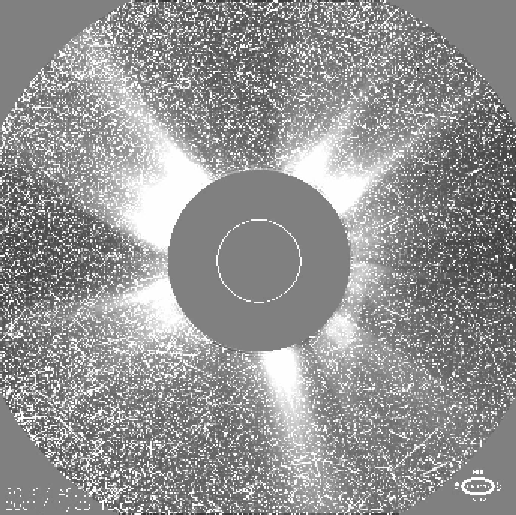Image Processing Reference
In-Depth Information
Figure 9.2
The problem of CCD overload is shown. Cosmic rays have hit the CCD and have
caused the image to be heavily distorted by noise. The removal of this noise is the subject of
this case study.
9.2 Soft Morphological Filters
It has been shown in earlier chapters that the amount of training data required for
the accurate design of filters grows very rapidly with increasing filter size. How-
ever, in order to solve many practical imaging problems, filters at least as large as 5
×
5 pixels are required. Unless these filters are constrained in some way, the search
space will become impossibly large. For example, recall that even a 5
5 stack fil-
ter has 2
25
(i.e., more than 33 million) input combinations. This means that each of
these would have to be observed several times in order to produce an accurate esti-
mate of their conditional output probability.
Therefore, it is necessary to constrain the filter to reduce this search space sub-
stantially. Many approaches to constraining the filters result in methods requiring
the rank ordering of the data.
Soft morphological filters comprise a branch of nonlinear image processing
particularly effective for noise removal. The soft morphological filter was first in-
troduced by Koskinen
3
in 1994. Design techniques for these filters based on genetic
algorithms were developed by Marshall and Harvey
4,5,6,7
and applications include
spatio-temporal filters for film archive restoration.
8
×

